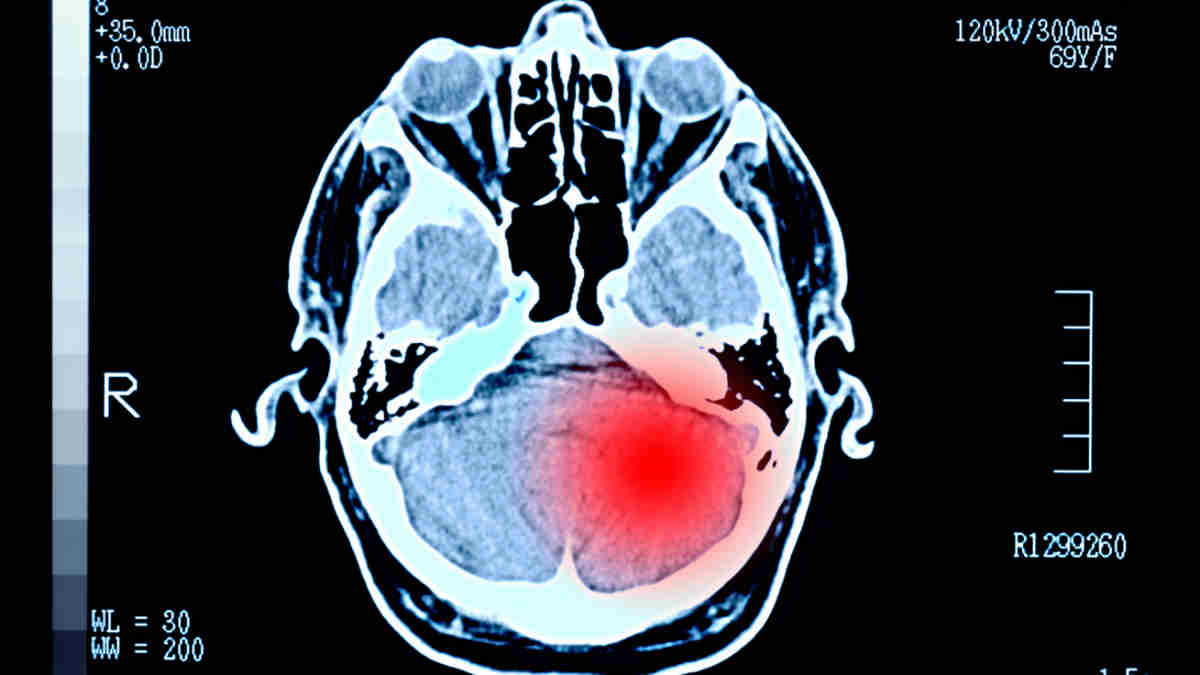The next Neuren? Nyrada chases after two big markets – stroke and traumatic brain injury

Nyrada chases after the big brain injury market. Could it be the next Neuren? Picture Getty
- Nyrada jumped 400pc in a single day last month
- The company reported good results from its Brain Injury Program
- Could Nyrada be the next Neuren?
Nyrada’s 400% share price rally on February 28 was the biggest single day jump of any ASX stocks this year.
Investors piled on the NYR ticker after the company reported positive results from its pre-clinical study evaluating the efficacy of its Brain Injury Program drug candidate, NYR-BI03.
The results provided strong evidence that NYR-BI03 has the potential to protect the brain from secondary injury.
“I think where the market excitement comes from is not only the results we got, but also the potential for this drug, given its broad application in two particularly large indications – stroke and traumatic brain injury,” Nyrada’s CEO, James Bonnar, told Stockhead.
Bonnar explained that there’s a very large unmet clinical need for stroke, given that a stroke occurs every 20 minutes here in Australia. Worldwide, stroke patients are estimated around 13 million annually.
“And for traumatic brain injury, there are currently no FDA approved drugs to treat patients who sustained a traumatic brain injury, apart from supportive care and rehabilitation.
“So traumatic brain injury is an even larger market than stroke.
“That’s where the market excitement comes from, that our drug has first class potential in in two very large indications,” said Bonnar.
What the study results show
NYR-BI03 was developed to selectively block “Canonical” Transient Receptor Potential (TRPC) ion channels, which are over-activated during brain trauma. Previous research indicated that these TRPC ion channels cause calcium overload, leading to the brain cell death.
In the pre-clinical study, a total of 16 test animals was treated with either NYR-BI03 or vehicle, 30 minutes following the induced brain injury. The treatment was conducted for 72 hours straight, via continuous intravenous infusion.
Magnetic Resonance Imaging (MRI) was then performed to quantify the brain injury in both the drug-treated and vehicle animals.
The MRI brain imaging showed that a statistically significant (p-value 0.0213) neuroprotection was achieved when animals received NYR-BI03 treatment.
On average, NYR-BI03 therapy rescued 42% of the brain injury in the penumbra region seen in animals receiving vehicle.
Bonnar explained that obtaining this 42% level was not only significant, but the best result the study could have expected.
“The magnitude of rescue achieved in this study is a compelling outcome, and signals a significant therapeutic and market opportunity,” said Bonnar, adding that these results had matched previous results from a transgenic mouse model study.
One of the few pioneers
Brain injury has received much attention in the media recently after league legend ‘King’ Wally Lewis revealed that he’s been diagnosed with probable chronic traumatic encephalopathy, or CTE.
CTE is a progressive and fatal condition caused by repeated blows to the head, resulting in memory loss, behavioural issues, and deterioration of basic cognitive skills.
“There’s potential for our drug candidate in lots of areas including concussion… (but) we aren’t planning any trials in concussion right now,” said Bonnar.
But regardless, Bonnar believes that Nyrada is one the few pioneers in the world in this field.
“As far as we’re aware, Nyrada is the first to take forward a drug like into human studies. We’re also the only ones taking this approach in stroke and traumatic brain injury,” Bonnar said.
“One of the exciting things about this candidate is we have the opportunity to look at a number of different conditions.
“For example, we’re planning a study in a traumatic brain injury using a model that mimics the types of injuries that soldiers incur on the battlefield.
“That work is just about to be initiated, and what that will do is it’ll open up a second indication to take the drug into Phase 2,” said Bonnar.
Could Nyrada be the next Neuren?
The next step for Nyrada will be to triple check the drug’s safety before starting a human trial in the second half of 2024.
That trial will test for safety and efficacy in traumatic brain injury. From there, Nyrada expects to expand into Phase 2 trials of NYR-BI03 for both TBI and stroke indications.
“Separately, we’ll also conduct a preclinical study with the Walter Reed Army Institute of Research. Working with the US army will help us decide if NYR-BI03 could also help military personnel who suffer a penetrative brain injury.
“TBI is obviously a key health concern for the military. And they will be one of the major customers for our drug.”
Conducting all this work will need money, and the company has just successfully raised $1.755 million via placement to fund the necessary work ahead.
“We’re a fairly lean operation, and we we did our last cap raise in the middle of 2021.”
Bonnar also says he’s had extensive experience in running a large Phase 2 clinical trial when he was the Director of Clinical Operations at the hugely successful ASX-lister, Neuren Pharma (ASX:NEU).
“Being a chemist means I know how to build a good small molecule. I was part of the Neuren team that took Daybue from early-stage preclinical development to the end of a Phase 2 trial.
“Along the way we built enough value in that product to attract US pharma company, Acadia, and ended up with a licence agreement worth more than US$400m. Acadia has since doubled down on Dayblue.
“I see Nyrada heading down a similar path,” said Bonnar.
Other ASX stocks in the brain space
HitIQ’s products provide end-to-end concussion ecosystem, supporting the identification, monitoring and management of sport related brain injury.
Called CSX, the platform is a cognitive assessment aid that helps track individuals’ brain health over time, screening for sudden changes after a potential brain injury.
HITIQ’s Nexus head impact sensor technology and mouthguard meanwhile allow for the capture and detailed analysis of head impact exposure in contact sports.
Its products will be used in the AFL and AFLW competitions for season 2024.
They are also being used in the English Premier League (EPL), and the National Rugby League (NRL), along with numerous other teams in a variety of sporting codes.
Actinogen is developing innovative treatments for Alzheimer’s disease and the cognitive decline associated with neurodegenerative diseases and metabolic diseases, like Type 2 diabetes.
The company focusses on the development of Xanamem, a novel treatment for Alzheimer’s disease.
Actinogen recently reported positive Xanamem human PET study, published in the Journal of Alzheimer’s Disease.
The study confirmed that high levels of Xanamem that target occupancy in the brain are safe and well tolerated.
Actinogen is currently undergoing clinical trials – XanaCIDD (Phase 2a, depression) and XanaMIA trials (Phase 2b, Alzheimer’s disease).
In 2023, Neuren became the first company in the world to offer an effective drug (DAYBUE) to treat Rett syndrome, a rare genetic neurological disorder that occurs almost exclusively in girls.
Infants seem healthy during their first six months, but over time, those with Rett syndrome rapidly lose coordination, speech and use of the hands.
In its latest trading update, Neuren reported profit after tax of $157 million for 2023.
Net sales for DAYBUE came in US$177.2 million for 2023, since its launch in April.
Guidance for DAYBUE net sales in 2024 is US$370-420 million, which will give Neuren with its first sales milestone payment of US$50 million to be earned for 2024.
Share prices today:
Related Topics

UNLOCK INSIGHTS
Discover the untold stories of emerging ASX stocks.
Daily news and expert analysis, it's free to subscribe.
By proceeding, you confirm you understand that we handle personal information in accordance with our Privacy Policy.








